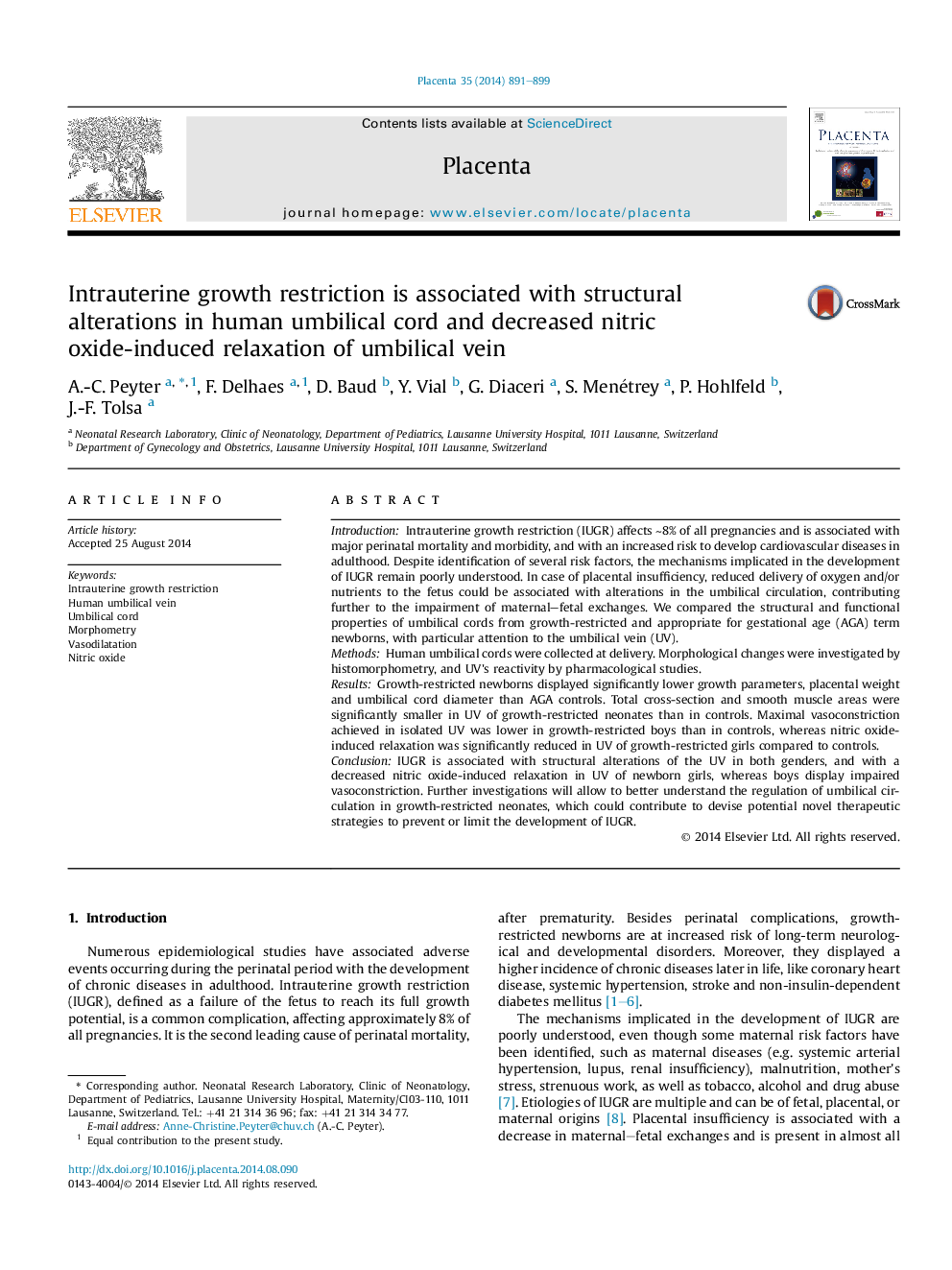| Article ID | Journal | Published Year | Pages | File Type |
|---|---|---|---|---|
| 2788767 | Placenta | 2014 | 9 Pages |
•Umbilical cords of growth-restricted neonates were compared to AGA controls.•Alterations were found in the vein, the direct link from the placenta to the fetus.•IUGR is associated with structural alterations in umbilical vein in both genders.•NO-induced relaxation is reduced in umbilical vein of growth-restricted newborn girls.•The originality of the study is the focus on human umbilical cord.
IntroductionIntrauterine growth restriction (IUGR) affects ∼8% of all pregnancies and is associated with major perinatal mortality and morbidity, and with an increased risk to develop cardiovascular diseases in adulthood. Despite identification of several risk factors, the mechanisms implicated in the development of IUGR remain poorly understood. In case of placental insufficiency, reduced delivery of oxygen and/or nutrients to the fetus could be associated with alterations in the umbilical circulation, contributing further to the impairment of maternal–fetal exchanges. We compared the structural and functional properties of umbilical cords from growth-restricted and appropriate for gestational age (AGA) term newborns, with particular attention to the umbilical vein (UV).MethodsHuman umbilical cords were collected at delivery. Morphological changes were investigated by histomorphometry, and UV's reactivity by pharmacological studies.ResultsGrowth-restricted newborns displayed significantly lower growth parameters, placental weight and umbilical cord diameter than AGA controls. Total cross-section and smooth muscle areas were significantly smaller in UV of growth-restricted neonates than in controls. Maximal vasoconstriction achieved in isolated UV was lower in growth-restricted boys than in controls, whereas nitric oxide-induced relaxation was significantly reduced in UV of growth-restricted girls compared to controls.ConclusionIUGR is associated with structural alterations of the UV in both genders, and with a decreased nitric oxide-induced relaxation in UV of newborn girls, whereas boys display impaired vasoconstriction. Further investigations will allow to better understand the regulation of umbilical circulation in growth-restricted neonates, which could contribute to devise potential novel therapeutic strategies to prevent or limit the development of IUGR.
